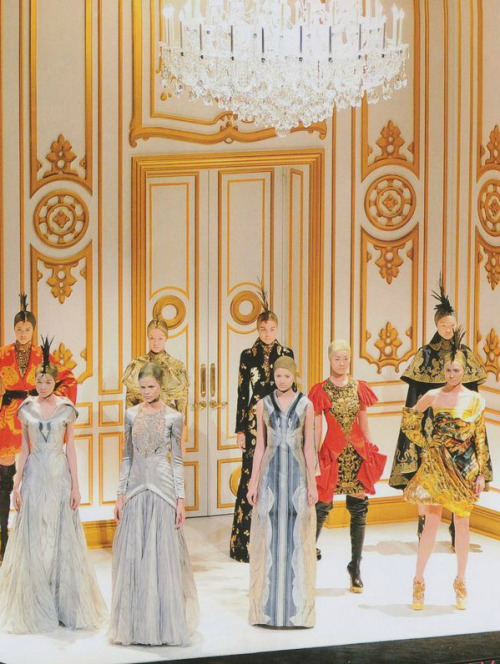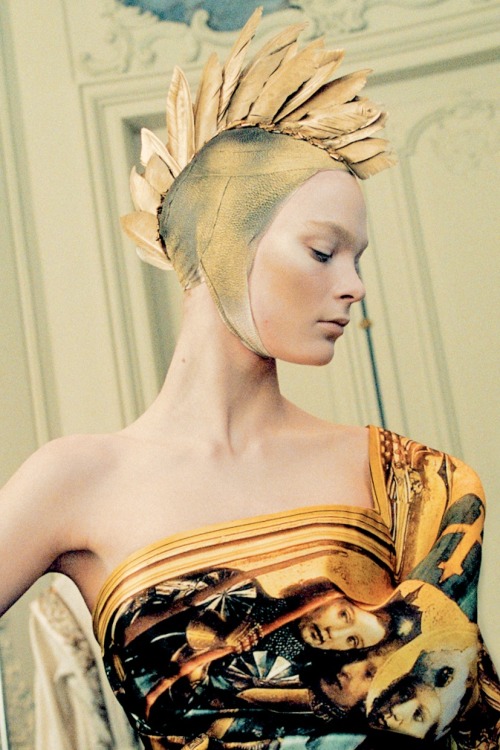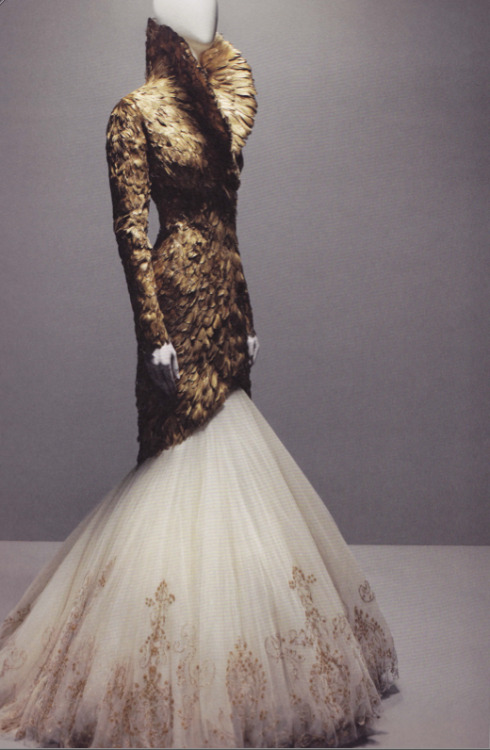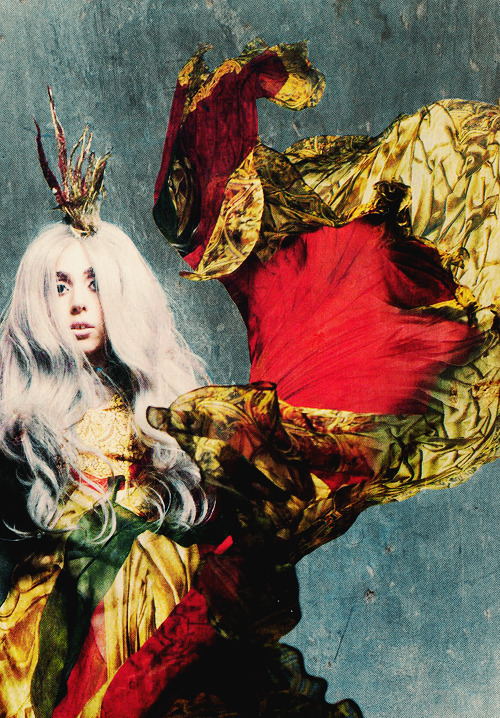There is dispute as to whether it is this
collection (video link here) or ‘Plato’s Atlantis’ that should be classed as McQueen’s last –
although S/S 2010 was the last that he completed, this posthumous collection
was around 80% complete at the time of the designer’s death. I have chosen to
take a further look at it both for reasons of posterity and also because the
pieces revealed a more elegant side to the designer’s palette, taking classic
works of art and superimposing them onto a series of breathtakingly beautiful
garments. It’s perhaps ironic that McQueen became truly fascinated with
religion and its concepts of the afterlife just months before his suicide, and
although the posthumous collection has no official title it is known as ‘Angels
and Demons’ – a title which fits the collection perfectly.
McQueen’s untimely death left Sarah Burton and the
rest of her creative team with the task of tying up loose ends and presenting
the collection – a task which the designer’s Burton pulled off spectacularly.
Choosing an intimate Paris showroom to display the pieces was a touching move,
and the room’s gilded mirrors and gold-edged furnishings were the perfect
accompaniment to the clothes themselves. His most ornate collection ever, ‘Angels
and Demons’ saw the designer abandon his fascination with technology and focus
on bringing the lost art of couture back into focus. He did this by
re-imagining some of the artworks with which he had been fascinated throughout
the collection’s conception – Botticelli, Fouquet and Lochner were all cited as
particular inspiration for the pieces.
The thread that links each piece is that of
decadence in an extremely literal sense. Full length cloaks were worn over
gowns of gilded gold leaf and belted sharply in reference to the designer’s
trademark silhouette. Thousands of tiny gold beads adorned one beautiful
crimson gown which came with its own matching cape, and elsewhere the designer
showed a silk evening gown whose layers gently enveloped the models curves in
swathes of fabric printed screen-printed with a work of Byzantine art. Gold
angel wings were lightly printed onto the back of the gown, and each look was
finished with a feathered Mohawk, whose plumage was gold-painted to match the
clothing.
As is always the case with McQueen, the best was
saved until last. The best was, in this case, a structured frock coat with a
high collar, made entirely from the same gold feathers that decorated the Mohawks.
A thick layer of white organza struggled to break free from the coat, creating
an elegant silhouette and re-introducing the theme of entrapment that was
always present within the designer’s work. In a way, ‘Angels and Demons’ and ‘Plato’s
Atlantis’ combine to make a definitive retrospective of the designer’s talent –
whereas the former showcased his ability to make breathtaking garments, the
latter displayed his willingness to push the boundaries of runway presentation.
The new low-key style of presentation is one which would become the signature
of McQueen’s successor, Sarah Burton – not necessarily a bad thing, especially
considering that the clothes still shown under the house of McQueen are as
beautiful as ever. However, despite Burton’s best efforts, this show underlines
the fact that McQueen and his talent were, and will always be, irreplaceable.





No comments:
Post a Comment